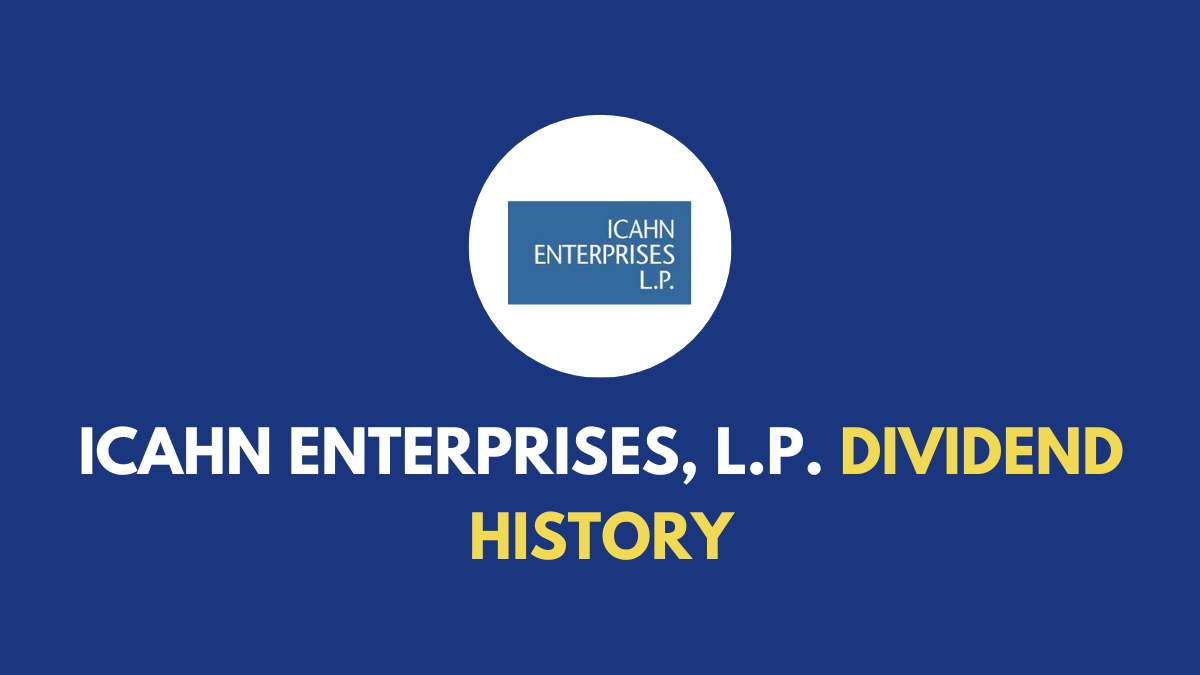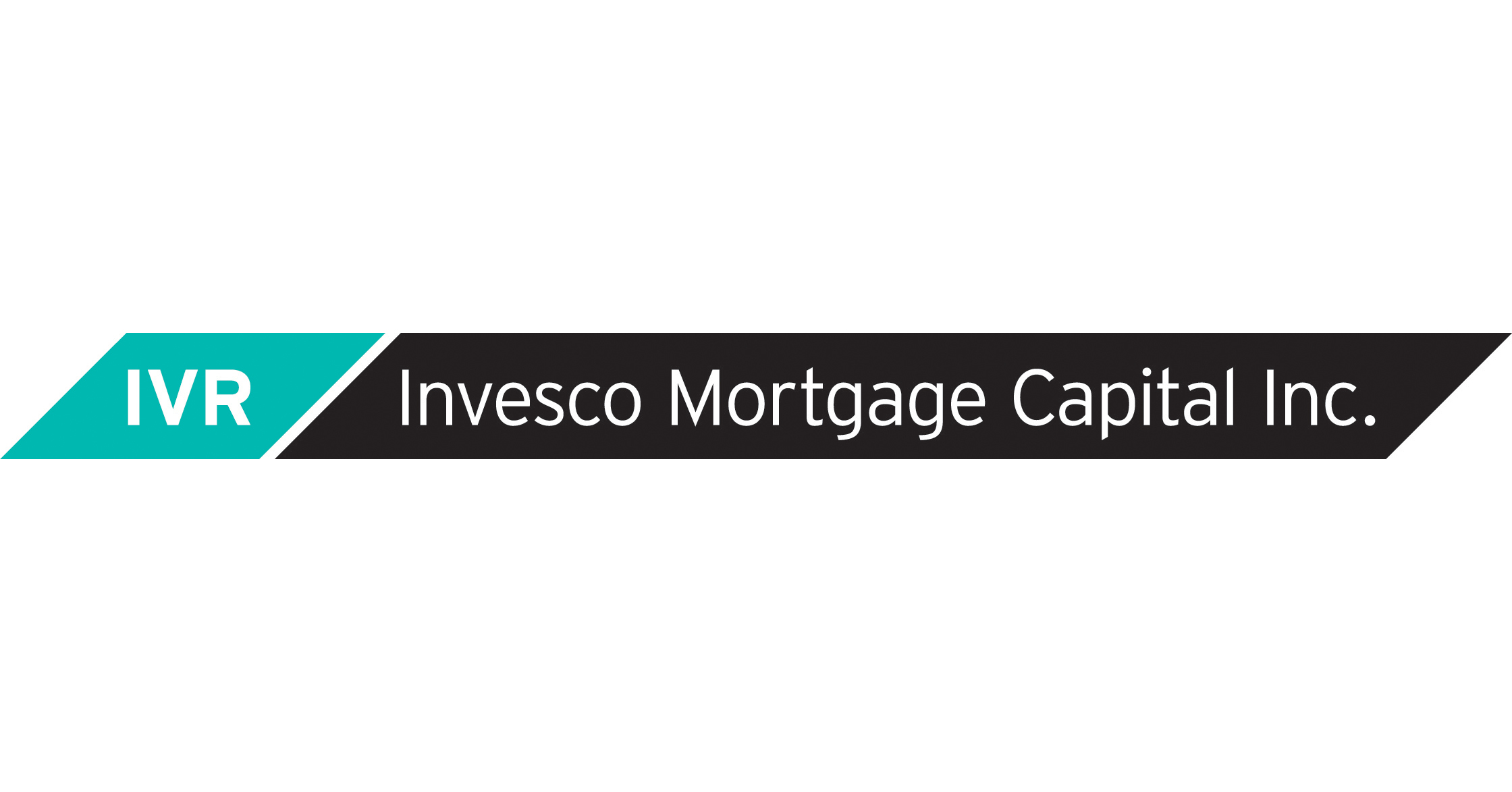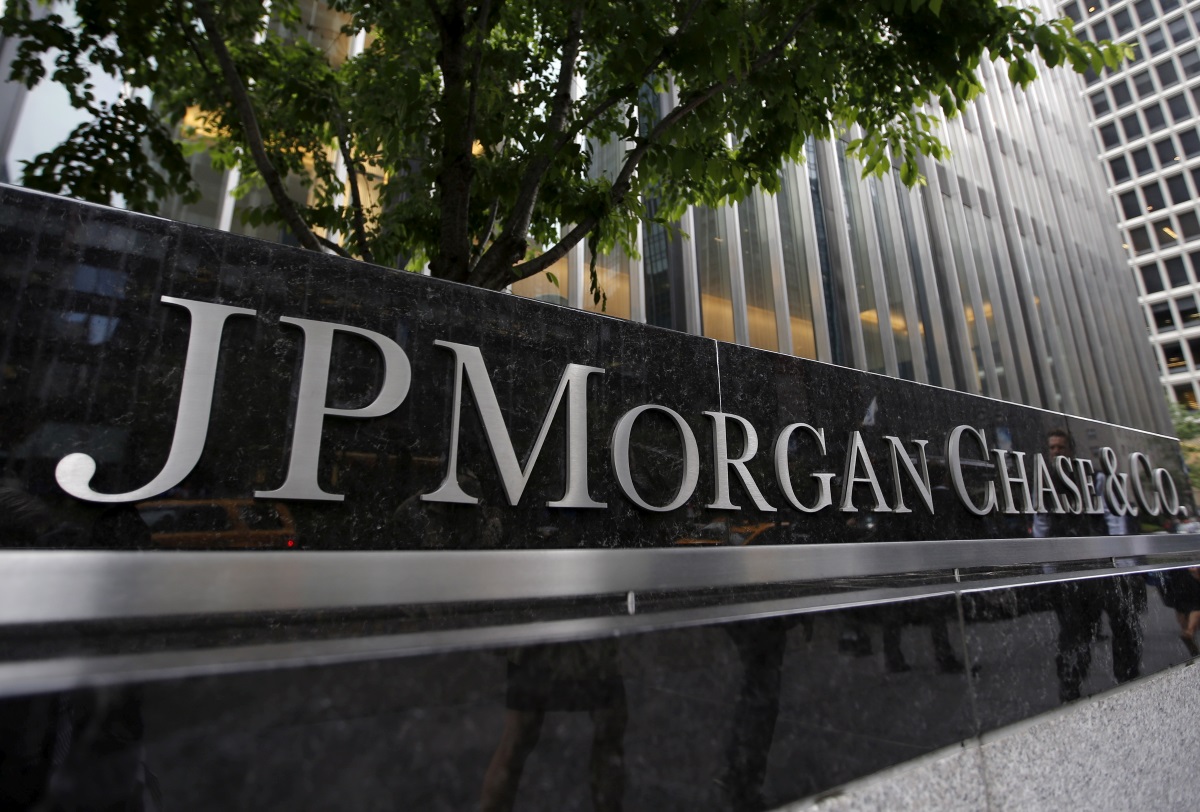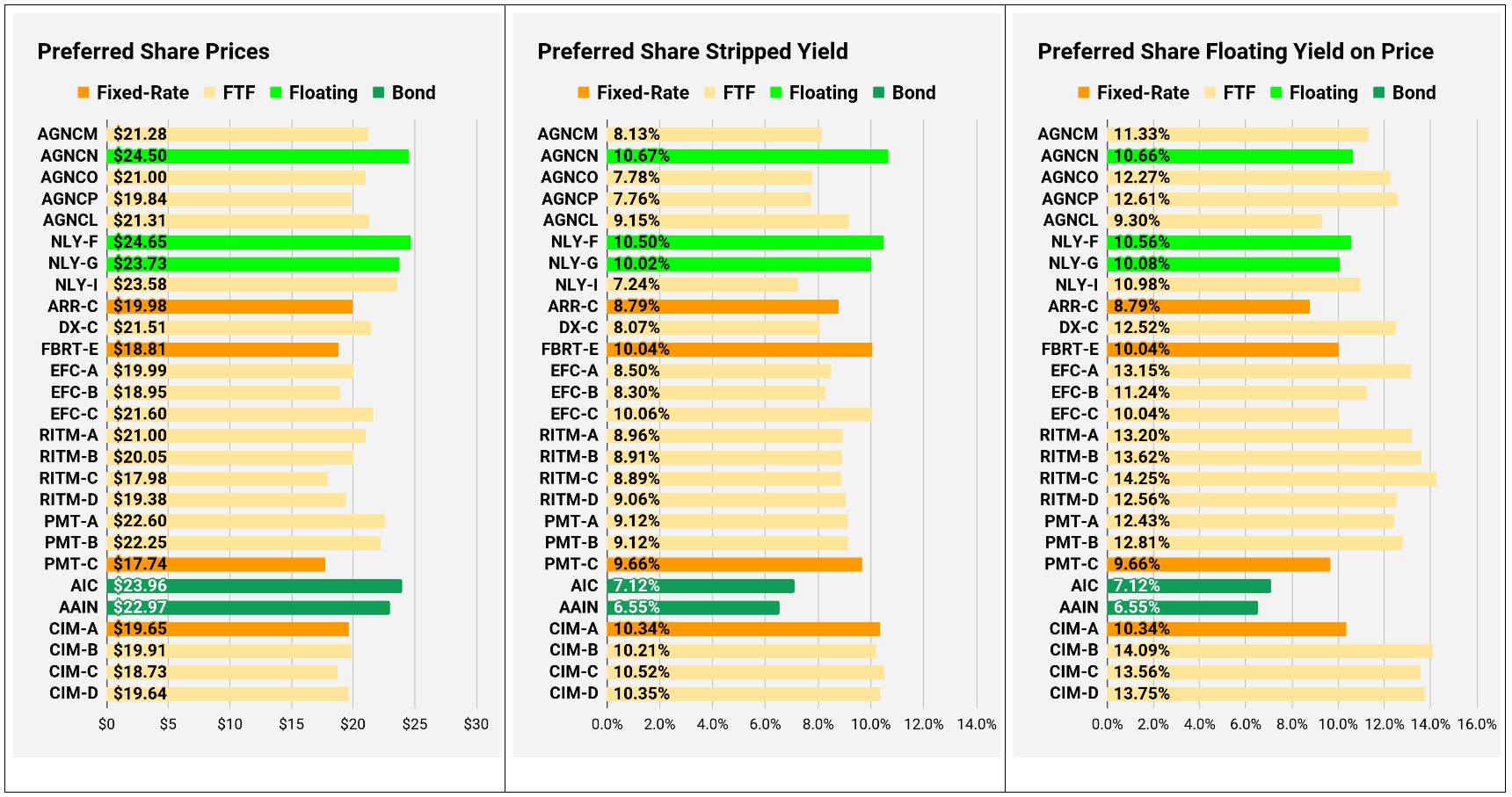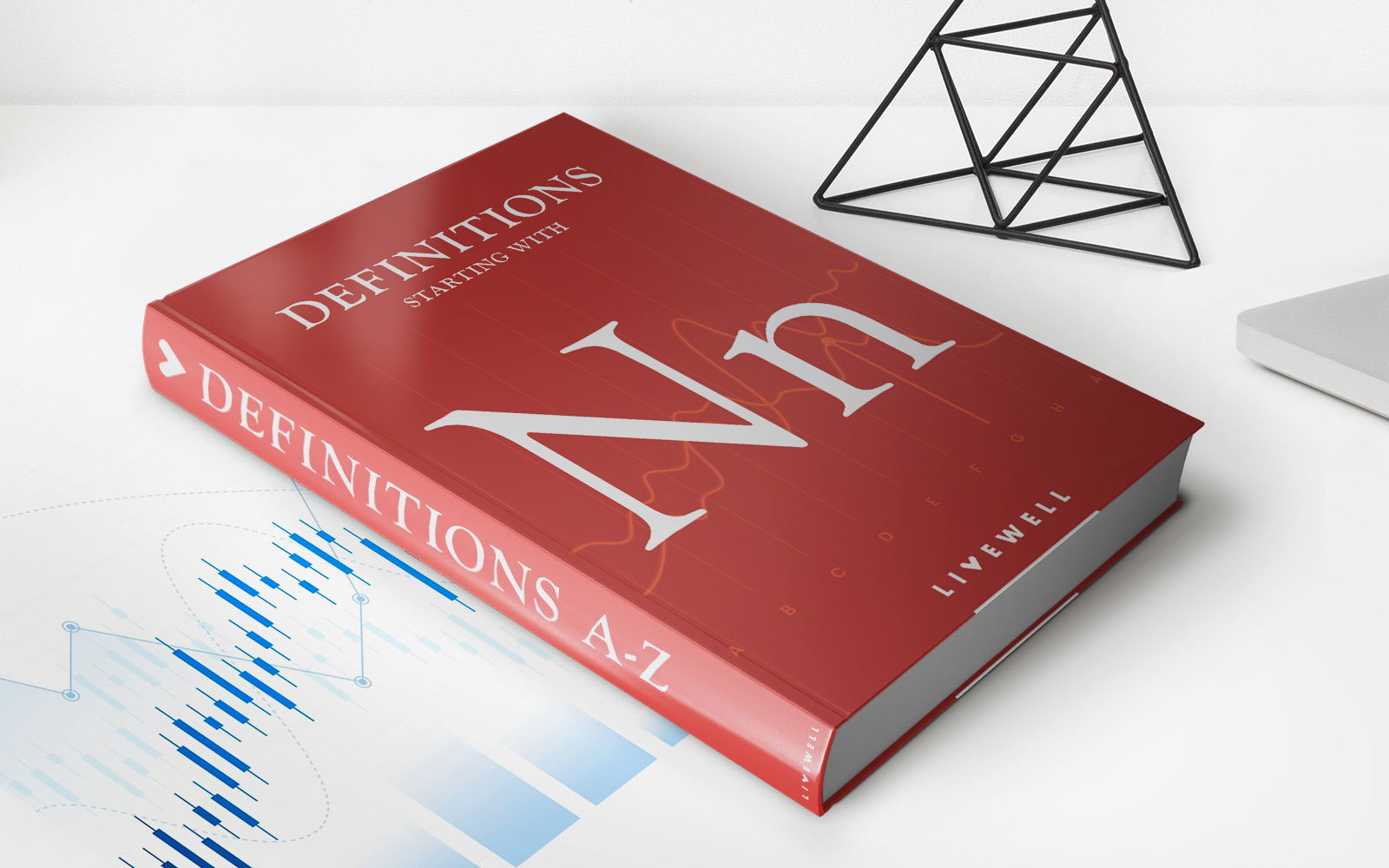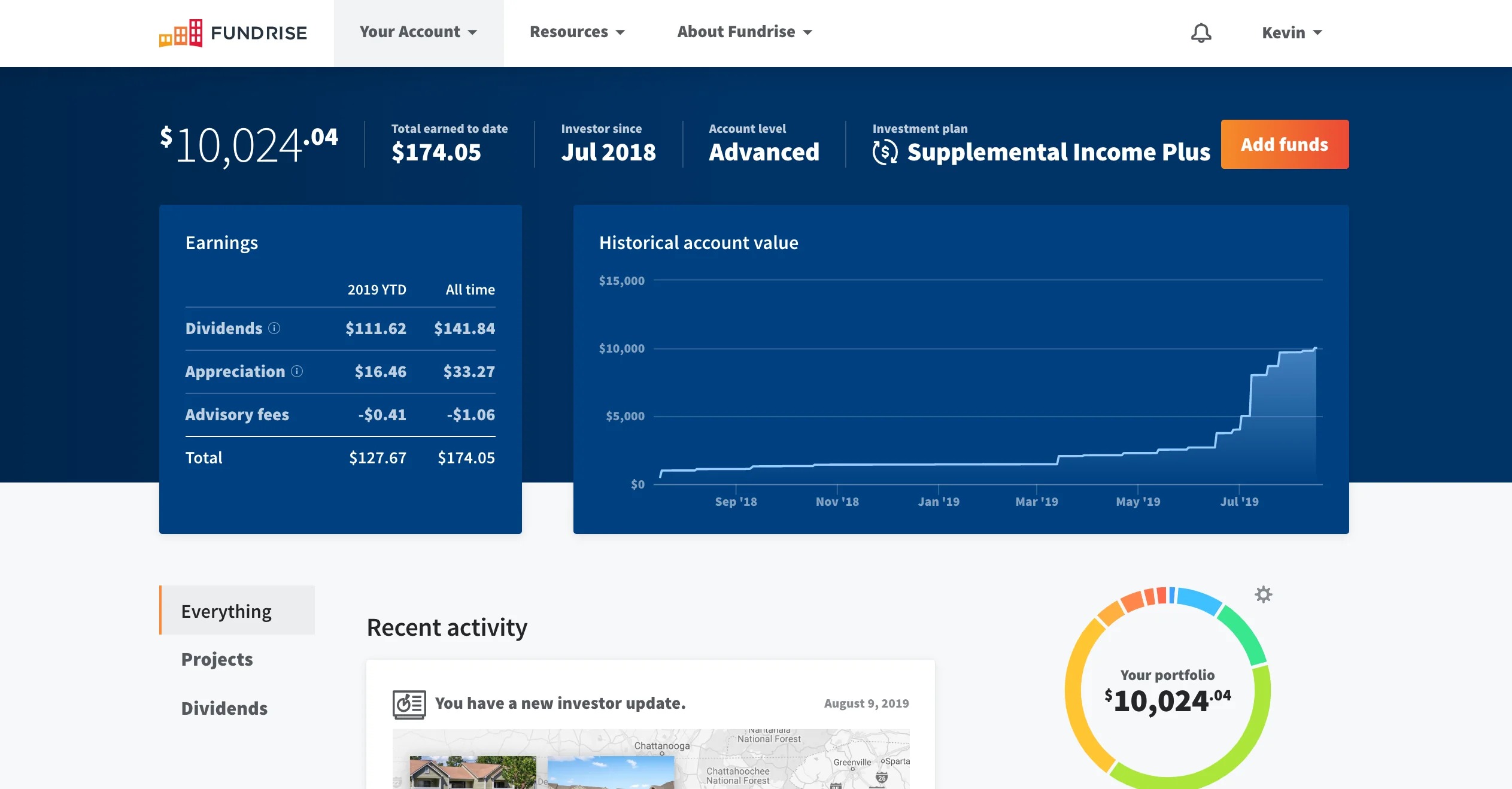

Finance
How Often Does Fundrise Pay Dividends
Published: January 2, 2024
Discover how often Fundrise pays dividends and get all the latest insights on finance. Don't miss out on this comprehensive guide to maximizing your investments.
(Many of the links in this article redirect to a specific reviewed product. Your purchase of these products through affiliate links helps to generate commission for LiveWell, at no extra cost. Learn more)
Table of Contents
Introduction
Investing in real estate has long been an attractive option for those looking to diversify their investment portfolio and earn passive income. Traditionally, however, real estate investing was limited to those with large amounts of capital. Enter Fundrise, an innovative platform that allows everyday investors to gain exposure to the real estate market.
Fundrise is a real estate crowdfunding platform that leverages technology to democratize real estate investing. Through Fundrise, individuals can invest in a diversified portfolio of real estate assets, including commercial properties, residential properties, and even development projects. One of the key benefits of investing in Fundrise is the potential to earn dividends on your investment.
Dividends, simply put, are a portion of a company’s profits that are distributed to its shareholders. In the context of Fundrise, dividends are payments made to investors based on the income generated by the real estate assets in which they have invested. These dividends can provide a regular stream of income, making Fundrise an appealing option for those looking for passive income opportunities.
In this article, we will delve into the world of Fundrise dividends. We will explore how dividends are calculated, the factors that can influence dividend payments, and the frequency of dividend distributions. Whether you are a seasoned investor or new to real estate investing, understanding how Fundrise dividends work can help you make informed decisions and optimize your investment strategy.
Understanding Fundrise Dividends
Before diving into the details of Fundrise dividends, it’s important to have a solid understanding of how this platform operates. Fundrise operates as an online real estate investment trust (REIT), which means that it pools together investors’ funds to acquire and manage a diversified portfolio of real estate assets. As an investor, you can purchase shares in these portfolios and become a shareholder in the underlying properties.
When you invest in Fundrise, you effectively become a part-owner of a wide range of real estate assets, including apartment buildings, office spaces, retail spaces, and more. The income generated from these assets, such as rental income, is distributed to investors as dividends.
Dividends from Fundrise are generally paid out on a quarterly basis, although the specific distribution schedule may vary. The amount of dividends you receive is determined by several factors, such as the performance of the underlying properties, operating expenses, and any income generated from the sale of properties in the portfolio.
It’s important to note that dividends from Fundrise are not guaranteed. Real estate investing inherently carries risks, and the income generated by the properties in the portfolio may fluctuate. There may be periods where dividend payments are lower or even suspended. Therefore, it is essential to thoroughly research and understand the risks associated with investing in real estate before making any investment decisions on the Fundrise platform.
When considering Fundrise dividends, it’s also crucial to understand the tax implications. Dividends from Fundrise are considered ordinary income for tax purposes and are subject to taxation at your individual tax rate. It’s wise to consult with a tax professional to understand how dividends from Fundrise will impact your overall tax situation.
Overall, Fundrise dividends provide investors with the opportunity to earn a regular stream of income from a diversified portfolio of real estate assets. However, it’s essential to approach these dividends with a realistic perspective, understanding that they can vary based on numerous factors and that investing in real estate involves risks.
Factors Affecting Dividend Payments
Several factors can influence the dividend payments that you receive as a Fundrise investor. Understanding these factors can help you make more informed decisions and set realistic expectations regarding your dividend income. Let’s explore some of the key factors that can impact dividend payments:
Property Performance: The performance of the underlying real estate properties in the Fundrise portfolio directly affects dividend payments. This includes factors such as rental income, occupancy rates, property appreciation, and operating expenses. Properties with higher rental income and lower expenses are more likely to generate higher dividends.
Economic Conditions: The overall economic conditions can have a significant impact on dividend payments. During periods of economic downturn or market instability, rental income may decrease, leading to lower dividend payments. Conversely, during robust economic periods, rental income may increase, resulting in higher dividends.
Market Demand: The demand for the types of properties in the Fundrise portfolio can also affect dividend payments. Real estate sectors that are in high demand, such as residential properties in desirable locations, may generate higher rental income and, consequently, higher dividends.
Property Diversification: Fundrise aims to provide investors with a diversified portfolio of real estate assets. The diversification of the portfolio across different property types and locations can help mitigate risks and stabilize dividend payments. Properties in different sectors or regions may perform differently, balancing out any fluctuations in dividend income.
Management Fees: Fundrise charges management fees for its services, which are deducted from the income generated by the portfolio. These fees can impact the overall dividend payment. It’s important to understand and consider the management fees when evaluating potential dividend income.
Market Conditions: The overall real estate market conditions, including supply and demand dynamics, interest rates, and investor sentiment, can also influence dividend payments. Market conditions can impact property valuations and rental income, directly affecting the dividends distributed to investors.
Inflation: Inflation can erode the purchasing power of dividend income over time. It’s important to consider the potential impact of inflation on your dividend payments and plan accordingly for long-term financial goals.
It’s important to note that these factors can vary over time and may affect dividend payments differently in different real estate cycles. As an investor, it’s crucial to regularly monitor these factors and keep track of your investment performance to make informed decisions.
Fundrise Dividend Schedule
The dividend schedule for Fundrise can vary depending on the specific portfolio and investment vehicle. While Fundrise aims to provide investors with regular dividend payments, it’s important to note that dividends are not guaranteed and can fluctuate based on various factors.
Typically, Fundrise distributes dividends on a quarterly basis, meaning that you can expect to receive dividend payments every three months. However, it’s important to understand that this schedule may vary depending on the specific investment vehicle and the performance of the underlying real estate assets. Fundrise also has the flexibility to adjust the dividend schedule as needed to align with investment objectives and market conditions.
Dividends are often distributed on a specific date, known as the ex-dividend date. The ex-dividend date is the date on which investors must be registered as shareholders to be eligible to receive the dividend payment. If you purchase Fundrise shares after the ex-dividend date, you would not be entitled to the upcoming dividend payment.
It’s important to keep track of the dividend schedule and ex-dividend dates to ensure that you are properly positioned to receive the dividend payments. Fundrise typically provides notifications and updates to investors regarding dividend distributions and ex-dividend dates through their platform or email notifications.
Dividend payments from Fundrise are typically reinvested back into the investment vehicle unless you choose to withdraw them as cash. This reinvestment can further enhance your investment returns by compounding the dividend income over time. However, Fundrise also provides the option for investors to withdraw dividend payments as cash if desired.
While Fundrise strives for consistent and predictable dividend payments, it’s important to note that dividends are not guaranteed and can be influenced by the performance of the underlying real estate assets, overall market conditions, and various other factors. Investors should carefully evaluate the Fundrise dividend schedule and understand that dividend payments may vary or even be suspended in certain circumstances.
By staying informed about the dividend schedule and monitoring the performance of your investments, you can better manage your expectations and make informed decisions regarding your investment strategy.
Frequency of Dividend Payments
The frequency of dividend payments from Fundrise can vary depending on the specific investment vehicle and the performance of the underlying real estate assets. Generally, Fundrise aims to distribute dividends on a quarterly basis, providing investors with a regular stream of income.
Dividends are typically paid out to investors every three months, allowing investors to receive income on a predictable schedule. This can be especially appealing for those seeking a consistent cash flow or looking to supplement their regular income.
However, it’s important to note that the frequency of dividend payments can be subject to change. Fundrise retains the flexibility to adjust the dividend schedule based on the performance of the underlying assets, market conditions, and other factors. Unforeseen circumstances or changes in the real estate market may affect the ability to make dividend payments as scheduled.
It’s vital for investors to keep track of the dividend schedule and stay updated on any changes or adjustments made by Fundrise. Fundrise typically provides notifications and updates regarding dividend distributions through their platform or by email. Monitoring these communications can help you stay informed about the frequency of dividend payments.
While quarterly dividend payments are the typical schedule, it’s essential to approach dividend income with a realistic expectation and be prepared for variations. Real estate is subject to market fluctuations and can experience periods of lower rental income or other income-generating challenges. These factors can impact the frequency and amount of dividend payments.
Investors should also consider the reinvestment option offered by Fundrise. When dividends are reinvested, they are used to purchase additional shares in the underlying investment vehicle, allowing for potential growth and compounding of returns. This can be an attractive option for those with a long-term investment strategy.
Ultimately, the frequency of dividend payments can provide investors with a steady income stream and the opportunity to benefit from regular cash distributions. By understanding the typical quarterly payment schedule, staying updated on any changes, and considering the reinvestment option, investors can effectively manage their expectations and make informed decisions regarding their investment strategy.
How Dividends are Calculated
The calculation of dividends in Fundrise involves several factors and methodologies that determine the amount of income distributed to investors. Understanding how dividends are calculated can give investors insight into the potential returns they can expect from their Fundrise investments.
Fundrise calculates dividends based on the income generated by the underlying real estate assets in the portfolio. This income primarily comes from rental payments made by tenants of the properties within the Fundrise portfolio. Other sources of income may include appreciation of property values, proceeds from property sales, and any other revenue generated by the real estate assets.
The specific methodology and formula used by Fundrise to calculate dividends may vary based on the investment vehicle and the structure of the portfolio. However, in general, the calculation relies on the net operating income (NOI) generated by the properties, which is the income received from tenants minus the operating expenses associated with managing the properties.
From the net operating income, Fundrise deducts any applicable fees, such as management fees and other expenses, to arrive at the distributable income available for dividends. This distributable income is then divided among the investors based on their ownership share in the portfolio.
The ownership share is determined by the number of shares an investor holds in the particular investment vehicle. The more shares an investor owns, the larger their share of the distributable income and, consequently, the higher their dividend payment.
It’s important to note that dividend calculations can be influenced by several external factors. The performance of the real estate market, economic conditions, vacancy rates, rental rates, and expenses associated with property operations can all impact the net operating income and, therefore, the dividend payments.
Additionally, Fundrise aims to provide investors with a diversified portfolio of real estate assets. This diversification helps to mitigate risk and balance the income generated by different types of properties in various locations. The performance of different properties within the portfolio can affect the overall dividend calculation.
Investors should also consider the tax implications of dividend income. Dividends from Fundrise are considered ordinary income for tax purposes and are subject to individual tax rates. It’s advisable to consult with a tax professional to understand the specific tax implications based on your personal situation.
By understanding how dividends are calculated in Fundrise, investors can assess the potential income-generating capabilities of their investment and make informed decisions regarding their investment strategy.
Considerations for Investors
Investing in Fundrise can be an exciting opportunity to diversify your portfolio and earn passive income from real estate assets. However, before jumping into this investment strategy, it’s important to carefully consider several factors that can impact your experience as an investor. Here are some key considerations:
Risk Tolerance: Real estate investing, like any investment, comes with inherent risks. It’s important to assess your risk tolerance and determine if you are comfortable with the potential fluctuations in dividend payments and the overall performance of the real estate market.
Time Horizon: Real estate investments are typically long-term in nature. Consider your investment goals, financial needs, and time horizon to determine if Fundrise aligns with your investment objectives.
Platform Fees: Fundrise charges management fees for its services. Carefully review and understand the fee structure to assess the impact of these fees on your overall investment returns.
Tax Implications: Dividend income from Fundrise is subject to taxation. Consult with a tax professional to understand the specific tax implications based on your personal tax situation.
Market Conditions: The performance of the real estate market can have a significant impact on the dividends you receive. Consider the current market conditions and evaluate how they may affect your investment returns.
Diversification: Fundrise aims to provide investors with a diversified portfolio of real estate assets. However, it’s still important to consider diversifying your overall investment portfolio to further mitigate risks.
Liquidity: Real estate investments are generally less liquid compared to traditional investment assets. Fundrise offers a redemption program that allows investors to sell their shares, but there may be limitations and fees associated with redemptions.
Research and Due Diligence: Before investing in Fundrise, conduct thorough research on the platform, the investment vehicles available, and the performance history. Review the offering documents, financial statements, and any available reports to make an informed decision.
Investment Objectives: Consider your investment goals and objectives. Does Fundrise align with your overall investment strategy? Understand how Fundrise fits into your broader investment portfolio and financial plan.
While Fundrise can offer unique opportunities for investors, it’s important to approach this investment avenue with a clear understanding of the risks and considerations involved. By carefully considering these factors, you can make informed decisions that align with your investment goals and risk tolerance.
Conclusion
Fundrise provides a novel and accessible way for investors to participate in the real estate market and earn dividends. By leveraging technological advancements and crowdfunding, Fundrise allows individuals to build a diversified real estate portfolio and potentially generate passive income.
Understanding how Fundrise dividends work is crucial for investors looking to optimize their investment strategy. Dividends are distributed based on the income generated by the underlying real estate assets, and the frequency of payments is typically on a quarterly basis. However, investors should be aware that dividends are not guaranteed and can be influenced by multiple factors such as property performance, economic conditions, market demand, and management fees.
Investors should carefully consider their risk tolerance, time horizon, and tax implications when investing in Fundrise. Conducting thorough research, understanding the platform fees, and staying informed about the market conditions are essential for making informed investment decisions.
While Fundrise offers diversification and potential income, it’s important to approach this investment avenue with a long-term perspective. Real estate investing is generally considered a long-term investment and may require patience and a realistic understanding of potential fluctuations in dividend payments.
In conclusion, Fundrise provides an innovative opportunity for investors to participate in the real estate market and potentially earn dividend income. By understanding how dividends are calculated, staying informed about the dividend schedule, and considering various factors that can affect dividend payments, investors can navigate this investment avenue with confidence.
However, it’s crucial to approach Fundrise and real estate investing as part of a well-diversified investment strategy and to carefully assess individual financial goals and risk tolerance. By doing so, investors can make informed decisions and potentially reap the rewards of participating in the real estate market through Fundrise.

